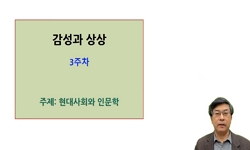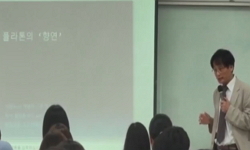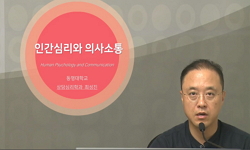This thesis aims to establish a common academic foothold for Eastern and Western aesthetics by finding an intersecting point on a more fundamental level between them in the concept of qing 情. A number of sinologists including A. C. Graham have shown...
http://chineseinput.net/에서 pinyin(병음)방식으로 중국어를 변환할 수 있습니다.
변환된 중국어를 복사하여 사용하시면 됩니다.
- 中文 을 입력하시려면 zhongwen을 입력하시고 space를누르시면됩니다.
- 北京 을 입력하시려면 beijing을 입력하시고 space를 누르시면 됩니다.

『성자명출(性自命出)』에서 ‘정(情)’의 문제: ‘감성인식’·‘도덕감정’·‘개체감정’의 합일 = “Qing 情” as an Aesthetic Concept in Xingzimingchu 性自命出: The Unity of Sensuous Cognition, Moral Emotion, and Human Emotion
한글로보기https://www.riss.kr/link?id=A107960446
-
저자
서희정 (中山大學)
- 발행기관
- 학술지명
- 권호사항
-
발행연도
2021
-
작성언어
Korean
-
주제어
xingzimingchu 性自命出 ; qing 情 ; sensuous cognition ; moral emotion ; human emotion ; 성자명출(性自命出) ; 정(情) ; 감성인식 ; 도덕감정 ; 개체감정
-
등재정보
KCI등재
-
자료형태
학술저널
-
수록면
95-121(27쪽)
-
KCI 피인용횟수
0
- DOI식별코드
- 제공처
-
0
상세조회 -
0
다운로드
부가정보
다국어 초록 (Multilingual Abstract)
This thesis aims to establish a common academic foothold for Eastern and Western aesthetics by finding an intersecting point on a more fundamental level between them in the concept of qing 情. A number of sinologists including A. C. Graham have shown constant interest in the concept of qing in ancient China and have attempted to link it with the concept of emotion in Western thought. However, the majority of sinologists’ understanding of qing still remains in the category of “moral emotion,” which is directly related to the choice of human actions, and thus it became inevitable that the personal human emotion found a limitation in the political purposes. This paper tries to reveal that the ancient Chinese concept of qing is directly involved in the realization of truth and the question of moral behavior―the issue of truth(眞) and good(善)―beyond the human emotions such as joy, anger, sorrow, and pleasure that appear in reality. This paper ascertains the origin and traces the process of separation and transition of the ancient Chinese concept of qing centered on the bamboo scripts of xingzimingchu 性自命出 through historical research. This makes it possible to show that the eastern concept of qing and the concept of human emotions in aesthetics are applicable to each other in the discussions about the unity between the truth, good, and beauty(美). The various implications regarding human emotions that qing gained in the discourse that intensified with the Chinese Weijin 魏晉 Dynasty promise to provide a foundation for a common discourse between Eastern philosophy and aesthetics in the future.
국문 초록 (Abstract)
본 논문은 보다 근본적인 차원에서 동양미학과 서양미학과의 소통지점을 찾음으로써 동서양 미학 공동의 학술적 발판을 마련하는 것에 그 궁극적 목적이 있으며, 그 소통지점을 ‘정(情)’ ...
본 논문은 보다 근본적인 차원에서 동양미학과 서양미학과의 소통지점을 찾음으로써 동서양 미학 공동의 학술적 발판을 마련하는 것에 그 궁극적 목적이 있으며, 그 소통지점을 ‘정(情)’ 개념에서 찾고자 한다. 그레이엄(A. C. Graham)을 비롯한 적지 않은 국제 한학자들은 고대 중국의 ‘정’개념에 대해서 꾸준한 관심을 보여 왔으며 이를 서양사상에서의 감정(emotion) 개념과 연계시키려는 시도를 해 왔다. 그러나 대다수의 해외 한학자들의 ‘정’에 관한 이해는 행위의 결정과 직접적 관계가 있는 ‘도덕감정’의 범주에 머물러 있어, 개체감정이 윤리적 목적성에 귀속되는 한계를 지닐 수밖에 없다. 이에 본 논문은 성자명출을 중심으로 한 중국 고대 ‘정’ 개념의 연원과 의미의 분립 및 전환과정에 관한 고증을 통해, 중국 고대의 ‘정’ 개념이 실제로는 표상적으로 드러나는 인간의 희노애락 감정을 넘어, 진리인식과 도덕행위의 문제, 즉 진과 선의 문제에 직접 관여하고 있음을 밝힌다. 이를 통해 동양의 ‘정’ 개념과 감성학에서의 인간감정에 관한 논의가 진·선·미 3자 간의 합일이라는 측면에서 서로 소통될 수 있다는 가능성을 제시한다.
참고문헌 (Reference)
1 "論語"
2 먼로 C. 비어슬리, "미학사(AESTHETICS: from Classical Greece to the Present" 이론과 실천 1999
3 李天虹, "郭店竹簡「性自命出」研究" 湖北教育出版社 2002
4 翟信斌, "郭店楚簡簡明讀本3 儒家學說: 「性自命出」, 「六德」, 「尊德義」" 湖北人民出版社 2007
5 陳 來, "郭店楚簡之“性自命出”篇初探" 3 : 1998
6 “簡帛書法選”編輯組, "郭店楚墓竹簡:性自命出" 文物出版社 2002
7 李 零, "道家文化研究" 三聯書店 1999
8 "論衡"
9 "詩經"
10 "荀子"
1 "論語"
2 먼로 C. 비어슬리, "미학사(AESTHETICS: from Classical Greece to the Present" 이론과 실천 1999
3 李天虹, "郭店竹簡「性自命出」研究" 湖北教育出版社 2002
4 翟信斌, "郭店楚簡簡明讀本3 儒家學說: 「性自命出」, 「六德」, 「尊德義」" 湖北人民出版社 2007
5 陳 來, "郭店楚簡之“性自命出”篇初探" 3 : 1998
6 “簡帛書法選”編輯組, "郭店楚墓竹簡:性自命出" 文物出版社 2002
7 李 零, "道家文化研究" 三聯書店 1999
8 "論衡"
9 "詩經"
10 "荀子"
11 何益鑫, "竹簡「性自命出」章句講疏" 上海三聯書店 2020
12 "禮記"
13 "方言"
14 "性自命出"
15 "左傳"
16 "尙書"
17 "孟子"
18 徐抗生, "孔子研究精華(1986∼2015)" 齊魯書社 2016
19 "國語"
20 周鳳五, "古文學與古文獻試刊號" 楚文化研究會印行 1999
21 田 君, "公孫尼子與「樂記」新考" (28) : 2009
22 朱 伯, "先秦倫理學槪論" 北京大學出版社 1984
23 "中庸"
24 "世說新語"
25 陳鼓應, "“太一生水”與“性自命出”發徽" 三聯書店 17 : 1999
26 Virág, Curie, "The Emotions in Early Chinese Philosophy" Oxford University Press 2017
27 Baumgarten, Alexander Gottlieb, "Texte zur Grundlegung der Ästhetik" Felix Meiner 1983
28 Graham, Angus Charles, "Studies in Chinese Philosophy and Philosophical Literature" State University of New York 1990
29 Ivanhoe, Philip J., "Readings in Classical Chinese Philosophy" Seven Bridges 2001
30 Bruya, Brian, "Qing 情 and Emotion in Early Chinese Thought" 2001
31 Deigh, John, "Philosophy of Emotion" Oxford University Press 2010
32 Tang, Yijie, "Emotion in Pre-Qin Ruist Moral Theory: An Explanation of ‘Dao Being in Qing’" 53 : 2003
33 Marks, Joel, "Emotion East and West" 41 : 1991
동일학술지(권/호) 다른 논문
-
웅십력 ‘내성외왕’론의 혁명성: ‘체용불이’ 개념을 중심으로
- 인문예술학회
- 박영우
- 2021
- KCI등재
-
‘변화’와 ‘장(場)’을 통한 중국 근대교육의 분석과 가치
- 인문예술학회
- 김덕삼
- 2021
- KCI등재
-
근대 유교지식인의 평화사상과 현실적 구현: 위정척사파의 철학사상을 중심으로
- 인문예술학회
- 박태옥
- 2021
- KCI등재
-
왕양명의 ‘양지(良知)’와 길버트 라일의 ‘Intelligence’를 바탕으로 한 ‘마음이 고와야 춤이 곱다’라는 한국전통춤 테제 해석
- 인문예술학회
- 김미영
- 2021
- KCI등재




 KCI
KCI







